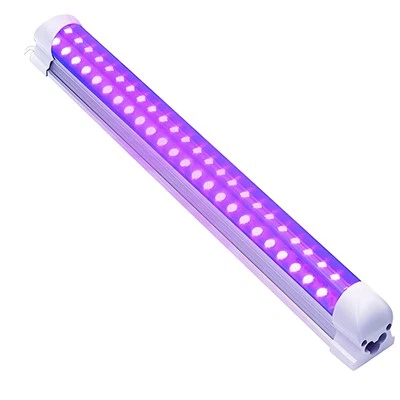You've come to the correct spot if you've observed your LED lights flashing and are wondering why this inconvenient occurrence is taking place. This discussion is on the reasons and fixes for LEDs that flicker. The post will discuss flickering and the need to comprehend and address the issue. The main reasons of flashing in LED lights will next be covered, including problems with the power source, subpar LEDs, compatibility with dimmer controls, and loose connections. The best remedies for LED lights that flicker will then be offered in the article.
What causes a flicker?
The fast flashing of the output light known as flickering is brought on by the unsettling oscillations of the incoming power source. A quick and repeated shift in a light's brightness is referred to as flickering, a phenomena that affects lighting systems. It occurs when a light source seems to be quickly fading and brightening, to put it simply. This may occur quickly, be visible to the human eye, and be upsetting and distracting.
Depending on the kind of lighting system, there might be a wide range of reasons of flickering. Flickering in conventional lighting systems may be brought on by poor-quality light bulbs or problems with the power supply, such as voltage changes. Flickering in LED lighting systems may be brought on by dimmer switch compatibility problems, weak connections, or poor-quality LED chips.
LED flickering may be a serious problem since it can shorten the lifetime of the LED and finally lead it to fail by causing the LED to deteriorate over time. Flickering may also lead to eye strain, headaches, and other health issues.

Flickering LEDs
LED Flickering Type
You should be aware of two forms of flickering:
- Clear Flickering
- Transparent Flickering
Flickering, visible and invisible

The human eye may quickly detect the phenomena known as visible flickering, which can be upsetting and even distracting. The frequency of the flickering may have a big impact on how noticeable it is and how it could affect your health. When the flashing frequency falls below 100 Hz, it is audible.
Frequencies between 3Hz and 70Hz may cause short-term epileptic seizures in those who are sensitive to light flickering. Long-term health problems including eye strain, headaches, dizziness, migraines, and nausea have also been related to prolonged exposure to flashing in the 15Hz to 20Hz frequency range.
The term "invisible flickering" describes a sudden shift in a light source's brightness that is imperceptible to the human eye. It may nevertheless have a detrimental effect on health and wellbeing even if it is not immediately obvious.
How Are Invisible Flickers Recognisable?
Given that invisible flicker is difficult for the human eye to detect, detecting its existence in LED lights may be difficult. However, a number of techniques exist to identify subtle flicker in LED lights, such as:
Smartphone:
Open the slow-motion video option on your smartphone camera.
Orient yourself with the LED light source.
There will be a discernible distortion. The intangible flicker is represented by this.

The flicker metre A specialised tool called a flicker metre is used to assess how much a light source flickers. Both visible and invisible flicker may be detected, and it can also offer quantitative values that can be used to assess the existence and severity of the issue.
High-speed Camera Recordings: The flicker that is invisible to the human eye may be seen by capturing the LED light source with a high-speed camera.
Computer simulations: To simulate the behaviour of LED lights and assess their flicker intensity, computer simulations may be employed.
What Effect Does Invisible Flickering Have on the Body?

health effects of invisible flicker
High flicker rates in LED lighting may have a number of negative effects on health. Human eyes must quickly adapt to shifting light output due to flicker, which puts strain on the eye muscles. According to studies, extended exposure to the flickering caused by LED lights may cause a number of health difficulties, such as eye strain, headaches, impaired vision, weariness, apparent slowing or halting of motion, decreased performance on visual tasks, and even neurological abnormalities.






